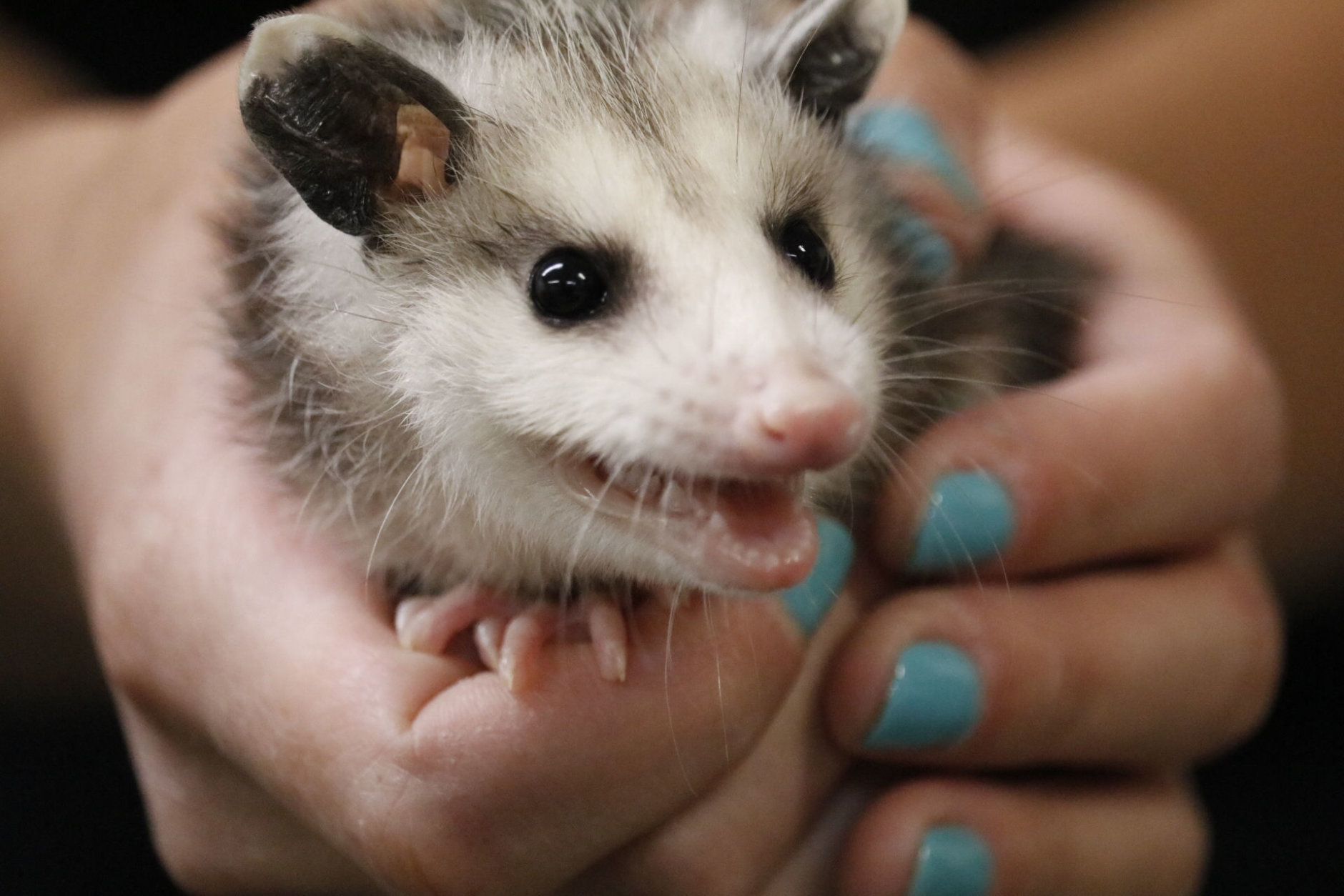
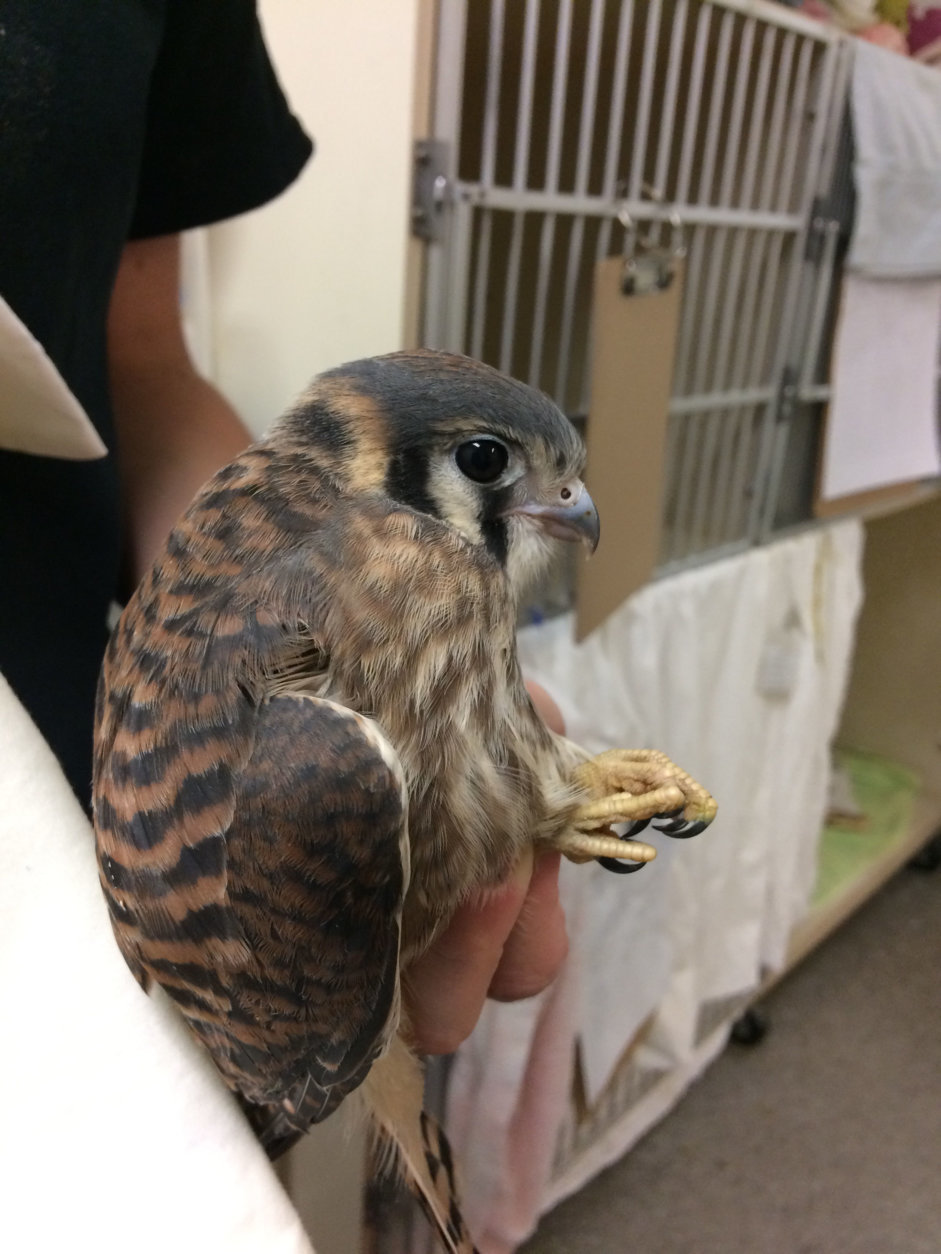
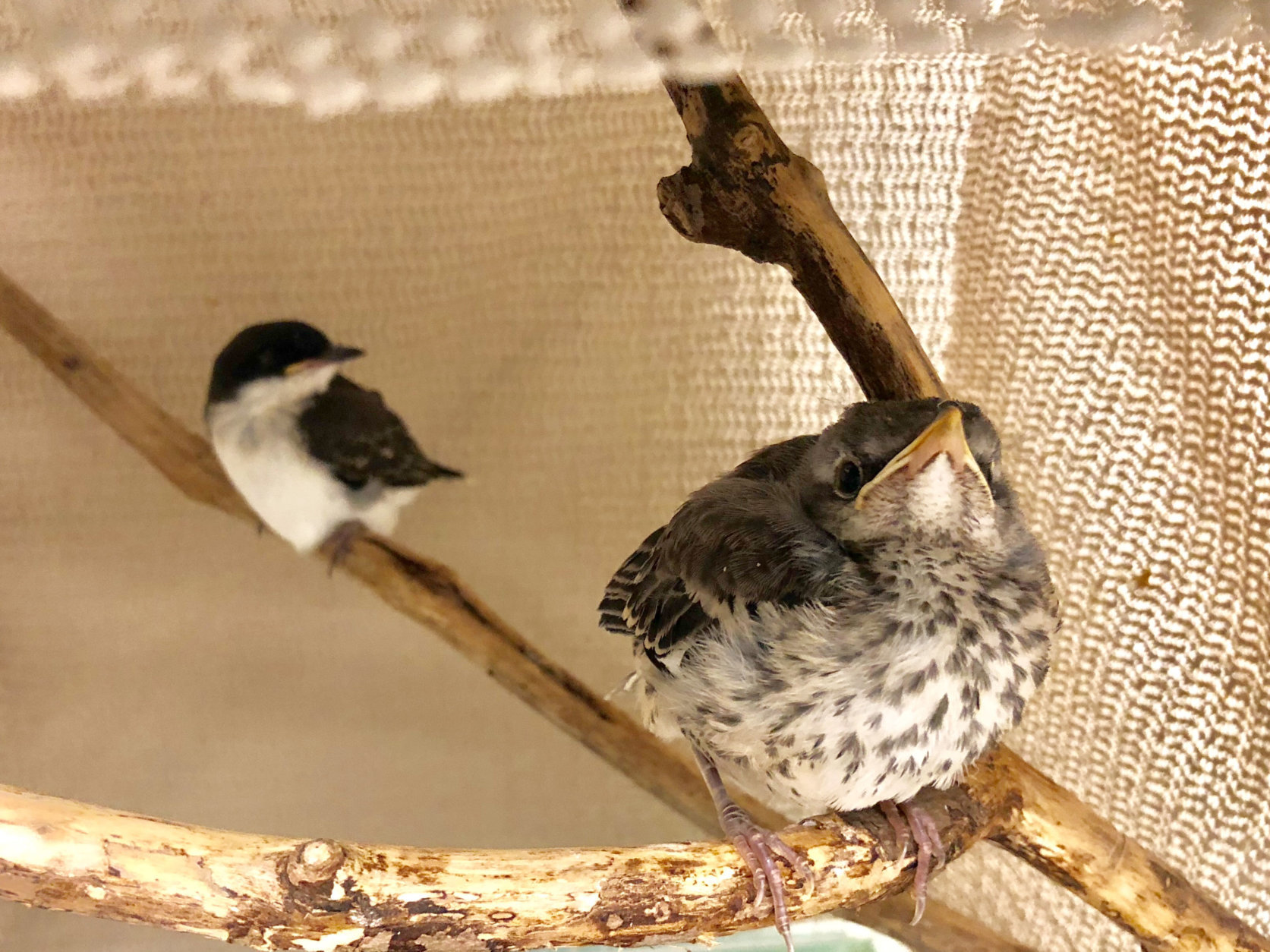


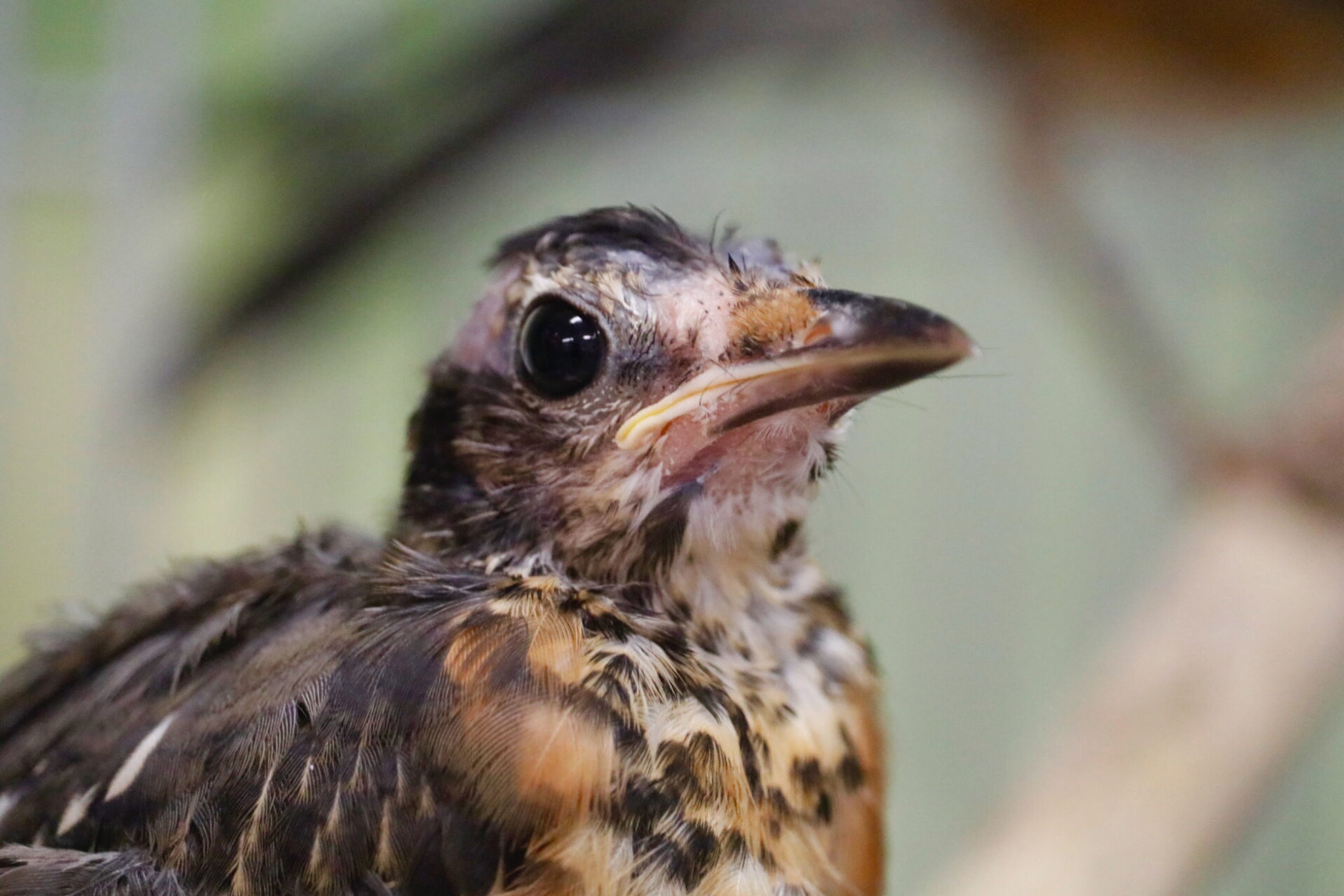
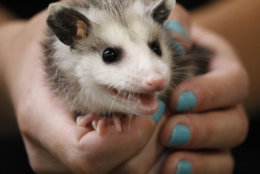
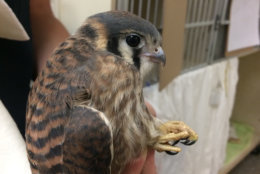
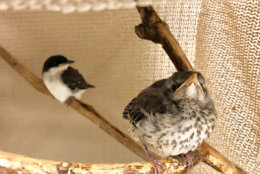
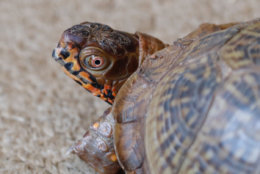
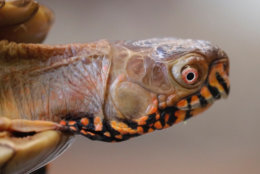
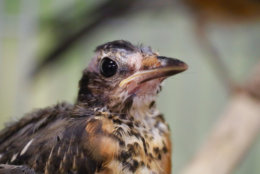
WASHINGTON — It’s lunchtime at City Wildlife in D.C., and that means it’s time to break out the mealworms, mice and other nutrient-packed treats … for the animals, not the staff.
There are hungry chimney swifts, snapping turtles, robins and even a tiny kestrel that need to eat.
The recent arrival of Valor, the bald eagle that took a tumble from his nest at the National Arboretum, put the spotlight on City Wildlife, where dozens of animals are getting treatment for a variety of issues. But while bald eagles may capture the public’s imagination, the daily care in this corner of Northwest extends to all kinds of animals.
There’s the massive snapping turtle in a tank that was hit by a car, for instance. His shell was badly damaged, but animal care manager Charlotte Lambert said his appetite has improved — he managed a mouse the other day. And “his injury is healing nicely,” she said.
There’s the tiny kestrel or sparrow hawk, a bird of prey about the size of a robin that, like its bigger raptor relative, needs to be able to hunt on its own before being released back into the wilds of D.C.
And there’s the little possum baby. City Wildlife’s Paula Goldberg calls possums “nature’s cleaner-uppers,” and said they’re badly misunderstood. If those narrow faces and pink hairless tails make people recoil, keep in mind: They put a serious dent in the tick population. It turns out ticks are a tasty treat to them.
Valor’s moved on to what amounts to an extended-care facility in Delaware after getting evaluated at City Wildlife by veterinarian and clinic director Kristi Jacobus. The bald eagle is one of four that’s been treated at the clinic since Jacobus has been on staff.
While the goal of treating wild animals is to get them back into the wild, there are times when staff at City Wildlife gets attached to an animal. For Jacobus, it was the case of a red-tailed hawk with a fractured humerus or “upper arm.” The repair resulted in full function, meaning the bird could soar and hunt once again.
“I did that surgery in collaboration with another facility, and we released it. So I hold that one dear to my heart, even though red-tailed hawks are common.”
Other cases that can be challenging — for example, owls. In order to hunt, Jacobus said, owls need to fly silently. Sometimes a repair to a wing may heal, but it will leave the bird with an audible flutter in flight.
“That’s why sometimes owls can’t be released back into the wild” she said.
While the care of wild animals is the priority, safety for staff is important too. Jacobus said there aren’t many animals that scare her, with the exception of cormorants. You can find them along the shores of the Potomac and Anacostia Rivers, big black birds that dive into water snagging fish.
“They are kind of scary animals, because they have really sharp beaks” and have an unnerving tendency, she said. “They will sometimes go for the eyes” she explained, which is why sometimes a second person is needed to handle them for examinations.
Lambert has been nailed more than once by some of the wild animals in her care, she said.
“Oh, yeah, but it’s a part of the job, and they’re wildlife, so it’s something you come to expect,” she added.
At this time of year, the number of baby birds coming in is dwindling, but there are fledglings — birds at that in-between stage of baby and adult — who have been admitted. Sometimes they get knocked out of their nests or —with the recent heavy rains — swept out, Lambert said.
A number of the animals brought in come from well-meaning people who assumed a wild animal had been abandoned. But that’s not always the case, Jacobus said. Fawns, for instance, are often left on their own while the mother deer goes off to graze.
“It’s always wise to give a wildlife center a call before doing anything yourself,” she said.
If you see an animal you think needs assistance you can call:
In D.C.
- City Wildlife: 202-882-1000
Outside D.C.
- Second Chance Wildlife Center: 301-926-9453
- Wildlife Center of Virginia: 540-942-9453
- Wildlife Rescue League: 703-440-0800






